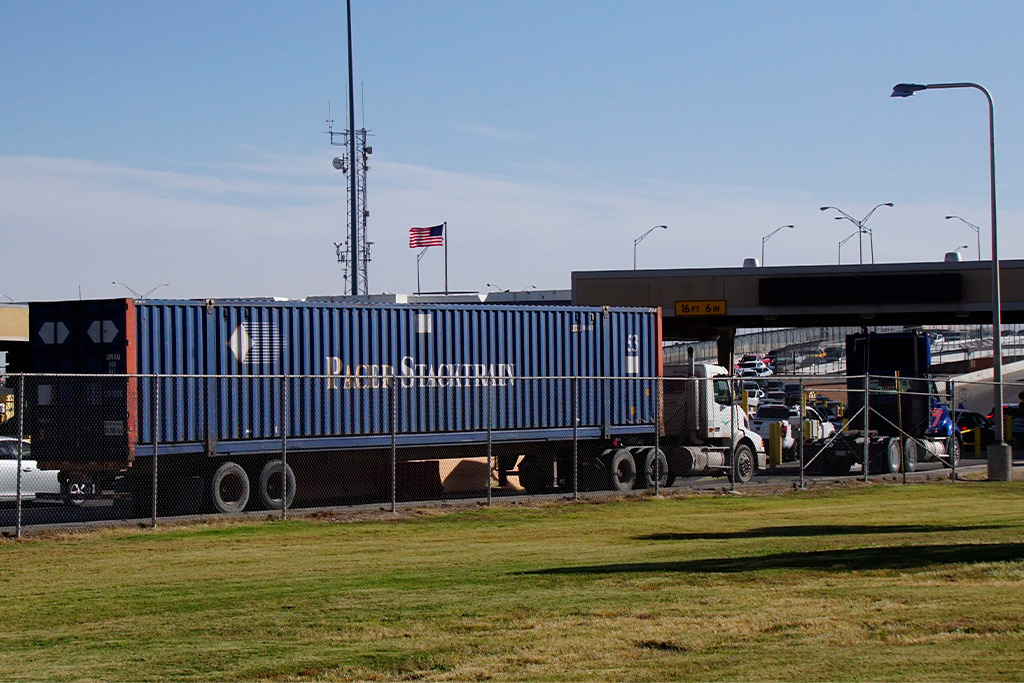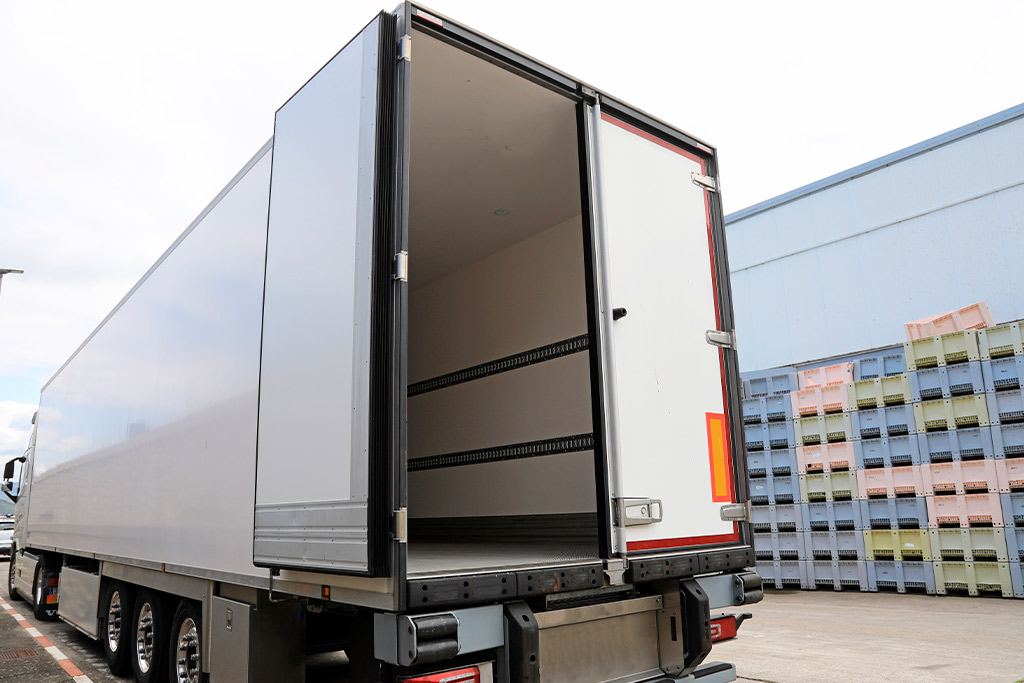Mastering Cross-Border Food Transport: 6 Essential Practices for Tijuana-San Diego Routes
The Tijuana-San Diego corridor stands as one of North America’s most important arteries for international commerce, particularly for food logistics. With thousands of trucks crossing daily, this border represents a juncture where efficiency and strategic planning directly impact food supply chains across both nations. For food manufacturers and distributors, this crossing isn’t just a checkpoint; it’s a strategic gateway that demands specialized knowledge and resources to navigate successfully.
Efficient and secure food transport across this border directly influences supply chain reliability, affecting everything from product availability to pricing and freshness. In an industry where “freshness, efficiency, and reliability are paramount,” maintaining seamless cross-border operations becomes essential for business sustainability and consumer satisfaction. Companies that master these logistics gain significant competitive advantages through reduced delays, lower spoilage rates, and deeper customer trust.
Cross-border food shipments face unique challenges that distinguish them from standard freight. These challenges are particularly pronounced for temperature-sensitive products requiring cold chain integrity and non-perishable goods that must maintain quality during potentially lengthy border waits. The complexities include:
- Navigating evolving regulatory requirements between two distinct national systems
- Maintaining precise temperature control during unpredictable border delays
- Ensuring product safety and quality through enhanced security protocols
- Managing documentation and compliance to prevent costly delays
To successfully navigate the complexities of cross-border food transport between Tijuana and San Diego, businesses must rely on logistics partners that adhere to proven best practices. Following the six essential strategies below can significantly reduce risk, enhance efficiency, and make sure that food products arrive fresh, secure, and on schedule.
1. Strategic Planning and Route Optimization

- Analyze peak border crossing times and schedule shipments during off-peak hours to minimize delays. The Tijuana-San Diego border crossing can experience wait times exceeding four hours during peak periods, particularly in summer months. Scheduling shipments during early morning (2-5 AM) or late evening hours (8-11 PM) can significantly reduce transit times and improve delivery predictability.
- Leverage AI-powered route optimization tools to adjust for real-time traffic and border wait times. Modern logistics software now employs advanced algorithms that simultaneously analyze multiple variables, including weather patterns, traffic conditions, historical crossing data, and fuel efficiency, to create dynamic routing solutions. These intelligent systems can automatically adjust routes mid-journey based on unexpected developments, such as sudden border delays, ensuring time-sensitive food shipments remain on schedule.
- Account for seasonal and event-based fluctuations in border congestion. Border traffic patterns vary predictably throughout the year, with significant increases during holiday seasons, summer months, and around major events. Prepare for extended delays during Mexican and American holidays, spring break periods, and local festivals. Develop contingency plans for these known congestion periods, including alternative routes, adjusted departure times, or expedited processing options for food shipments with critical delivery timelines.
2. Regulatory Compliance and Documentation
- Stay vigilant regarding Mexico’s evolving cross-border shipping regulations for 2025, which increasingly emphasize digital documentation requirements. The shift toward electronic processing aims to streamline customs clearance while strengthening security for food shipments. Regularly review regulatory updates to avoid costly delays and ensure compliance with changing tariff structures and customs procedures.
- Prepare comprehensive documentation well before shipment to prevent bottlenecks at the Tijuana-San Diego border. Essential paperwork includes commercial invoices with accurate product classification, certificates of origin, detailed packing lists, proper food safety certifications, and customs declaration forms. For food products specifically, ensure all nutritional information and ingredient listings meet both U.S. and Mexican requirements.
- Leverage advanced digital solutions to minimize errors and accelerate border clearance processes. Electronic Data Interchange (EDI) systems and blockchain technology create immutable documentation records that can be shared securely with customs officials. These technologies not only reduce paperwork but also provide real-time tracking of customs status, particularly valuable for time-sensitive food shipments that cannot afford extended border delays.
3. Cold Chain Integrity: Protecting Temperature-Sensitive Food Shipments
- Maintain precise temperature control throughout transit. Food shipments typically require a temperature range of 2°C to 8°C to preserve quality and safety. Utilize specialized refrigerated trailers (reefers) equipped with reliable cooling systems and supplement with advanced insulated packaging materials like phase-change materials and vacuum panels to buffer against external heat exposure.
- Deploy real-time temperature monitoring technology. Implement IoT-enabled sensors throughout the cargo area to track conditions continuously during transit. These systems provide immediate alerts when temperatures deviate from acceptable ranges, allowing for rapid intervention before product integrity is compromised.
- Plan border crossings strategically to minimize temperature risks. Schedule crossings during cooler morning or evening hours, especially during summer months when the Tijuana-San Diego border can experience extended wait times. Prioritize rapid transitions at handling points to prevent temperature excursions that commonly occur during loading, unloading, and inspection processes.
- Partner with certified cold chain logistics specialists. Choose carriers with demonstrable expertise in temperature-controlled transport and C-TPAT certification. Experienced providers understand regulatory requirements for food safety on both sides of the border and maintain properly calibrated equipment with documented maintenance records to ensure compliance.
4. Security and Risk Management for Food Cargo

- Adopt multi-layered security protocols: 21-point inspections, certified K9 units, and C-TPAT certification. Food cargo security begins before transportation starts. Implement comprehensive pre-departure inspections covering vehicle integrity, documentation, and cargo sealing. Partner with logistics providers that utilize certified K9 units for thorough cargo verification, particularly effective at detecting contraband that could contaminate food shipments. Obtain C-TPAT (Customs-Trade Partnership Against Terrorism) certification to streamline border processing, reduce inspection frequencies, and gain access to dedicated FAST lanes at the Tijuana-San Diego crossing.
- Use 24/7 GPS monitoring and on-site security personnel to prevent cargo theft or tampering. Deploy real-time tracking systems that monitor not just location but also door openings, temperature variations, and unexpected stops. This technology provides continuous visibility throughout the journey and immediate alerts for any security breaches. Supplement electronic monitoring with physical security measures, including armed guards at transshipment facilities and yards, ensuring your food cargo remains protected during vulnerable loading and unloading phases.
- Establish emergency protocols for handling delays or incidents that could compromise food quality or safety. Develop detailed contingency plans addressing common scenarios: extended border delays, refrigeration failures, vehicle breakdowns, or security incidents. These protocols should include clear escalation procedures, alternative routing options, backup transportation arrangements, and emergency contact information for relevant authorities on both sides of the border. Conduct regular drills to ensure all team members understand their responsibilities during emergencies, minimizing response time when food integrity is at risk.
5. Leveraging Technology for Transparency and Efficiency
- Utilize advanced logistics platforms for real-time shipment tracking and digital documentation management. Modern logistics software provides complete visibility into your food shipments, allowing you to monitor their exact location throughout the Tijuana-San Diego corridor. These platforms streamline documentation by digitizing customs forms, commercial invoices, and certificates of origin, reducing paperwork errors that commonly cause border delays. With digital document management, stakeholders can instantly access and verify shipping information, speeding up inspections and clearance processes while maintaining a secure audit trail for regulatory compliance.
- Employ blockchain solutions for secure, immutable customs records and faster processing. Blockchain technology is revolutionizing cross-border food logistics by creating tamper-proof documentation records that customs officials can trust. This emerging technology offers significant advantages: immutable record-keeping, real-time tracking of customs status, reduced processing times, and enhanced security against documentation fraud. For food transporters on the Tijuana-San Diego route, blockchain integration creates a digital thread connecting every aspect of the customs clearance process, particularly valuable for time-sensitive food cargo, as it can reduce border crossing times through pre-validated documentation and automated compliance checks.
- Integrate IoT sensors for monitoring cargo conditions (temperature, humidity, shocks) throughout the journey. Internet of Things (IoT) devices provide unprecedented visibility into food cargo conditions during cross-border transit. Smart sensors continuously monitor parameters such as temperature, humidity, shock exposure, and container security status. For temperature-sensitive food shipments, these devices ensure cold chain integrity is maintained by providing immediate alerts when conditions deviate. Advanced systems even allow for remote interventions based on sensor data, enabling quick corrective actions before food quality is compromised. These monitoring systems help establish liability when breaches occur by pinpointing exactly where and when conditions changed during the Tijuana-San Diego journey.
6. Building Strong Partnerships with Experienced Logistics Providers

- Choose providers with proven expertise in Tijuana-San Diego cross-border food logistics. Look for partners with demonstrable experience transporting food products specifically across this border, as they’ll understand the unique challenges and requirements for maintaining product integrity. Seek logistics companies that maintain established relationships with customs authorities on both sides. Experienced partners understand border protocols and can significantly reduce waiting times, which is essential for time-sensitive food shipments.
- Seek partners offering comprehensive solutions: modern fleets, bonded carrier services, and in-house mechanics. Rather than juggling multiple vendors, partner with providers that offer “all-in-one solutions” including specialized equipment for food transport, extensive yard support, and bonded carrier services. Comprehensive providers eliminate intermediary issues and reduce complexity in your supply chain.
- Make sure your provider is proactive about compliance, technology adoption, and continuous process improvement. The regulatory landscape for cross-border food transport constantly evolves, requiring partners who stay ahead of changes. Select providers who demonstrate commitment to C-TPAT certification, implement rigorous security protocols like 21-point inspections, and utilize certified K9 units for cargo verification. Verify they invest in technologies that enhance visibility, such as real-time tracking systems and temperature monitoring solutions.
Achieving Success in Cross-Border Food Transport
The Tijuana-San Diego corridor remains a pivotal gateway for food logistics that demands strategic excellence. The six essential practices outlined above form an interconnected framework that transforms border crossings from potential bottlenecks into seamless logistics operations. Optimizing cross-border food transport operations yields substantial benefits: reduced transit times, minimized product deterioration, enhanced regulatory compliance, and strengthened customer trust.
Optimize your cross-border logistics with Mex-Cal Truckline, your trusted partner for temperature-sensitive and perishable cargo between the U.S. and Mexico. With over 40 years of experience on the Tijuana-San Diego route, we specialize in cold chain integrity, regulatory compliance, and real-time tracking to ensure your food products arrive fresh, safe, and on schedule. Let our expert team simplify your border crossings and strengthen your supply chain. Discover more about our logistics solutions.





